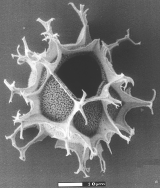3000 years ago, the notion of finding the heart of a word was to seek the real thing. Then, it was believed that the spirit of the thing resided in the word. By calling the name of the entity, one would imbue, or bring forth, that phrasing with the immanent power of the spirit of the entity named. That could be risk laden. Because in that time, there was a visioning that the name was the thing. It’s about prayer. It’s about invocation — the evocation. The conception of prayer, the curse, the blessing — and invocation (the voicing or calling in) To that end, therefore, the notion of the word, eytmon, the inner meaning had immense power.
Those were the days. That was then, this is now.
Still, the name imbues character and the sense of the sound of the spoken word and the semantic presence held there. In the exploration and naming creation for our clients, comprehending, investigating and formulating the nature of the word, the meaning that is held within, it’s important to comprehend the layering of content that can imbue a naming solution with added brand depth.
The practice of naming is something that requires collaboratively reaching into the heart of strategic intentions — and the long term story of the brand — to find the soul of the enterprise, and build upon those elements that are meaningful. Meaning is one element, another is resonance. And sometimes, the concept of resounding in connection with guests, clients, customers, might involve developing relevant solutions that not only happily equate to a story that’s collected to an audience, but internally says something to those that work on the brand’s business.
Ideator® is the name of Girvin’s name development team. Our process is about acknowledging the above and focusing on strategic sequencing to help our clients arrive on the selection of naming solutions that are empowering visions to the character of their enterprise orientation. Step by step, sequenced in collaboration, utilizing the team at Girvin to build direction and create solutions; it’s been in play for our practice relationships since the mid 80s.
So, in thinking about names in the context of contemporary branding — how much meaning is there, what’s the layering of content and context? Who cares about it? Do customers really care, do they know that there’s something more there — to the name of a company that they might have a relationship with? If the story is told, we believe that they do. It’s part of their recalling.
Take Cingular, for example. What’s that mean? What’s the concept that springs to mind?
Being a biologist, I go to dinoflagellates. I’m sure that instantly you went there as well.
Dinoflagellates are microscopic, (usually) unicellular, flagellated, often photosynthetic protists, commonly regarded as “algae” (Division Dinoflagellata). The ringing band that circles this type of protist microorganism is the cingulum. You can see it here, noted below — the ring.

cingular (SING-gyuh-luhr) adjective 1. Of or pertaining to a cingulum, an anatomical band or girdle on an animal or plant. 2. Encircling, girdling, surrounding. [From Latin cingulum (girdle), from cingere (to gird). Other words that are derived from the same root are cincture, precinct, shingles, and succinct.]
That which relates to the cingulum is cingular. And I suppose, when you look at the identity for Cingular, with that little blob of a figure, you might be reminded of this:

Anu Garg, who began a site in 1994, as a computer student (and scientist) created weblink called Wordsmith. And evolved the function, a word a day. Here’s his take on that space, knocked off from his site: http://wordsmith.org/awad.
“When you see someone sporting a shirt with the manufacturer’s name inscribed in bold letters across the chest, it’s hard to ignore the irony. Here the apparel wearer is paying the company to promote its name, rather than vice versa. For the privilege of being a walking billboard, one forks over many times what one would normally pay for the same product. So next time you wear a pair of shoes with that logo, or a pair of pants with some large initials stitched on them, or a shirt with a brightly painted name, remember, you’re inadvertently advertising the company. The word “advertise” comes to us from Latin advertere meaning “to turn toward” or “to pay attention”. The word “inadvertently” derives from the same source. In other words, by not paying attention, we ARE paying attention. Do you ever wonder about the meaning of all those company names on billboards, taxis, supermarket floors, movies, clothing, and in your children’s school books? While some of these are coined names (Sony, Novartis, Intel), many of them are bona fide words from the dictionary.”
The indices here to discussion are similarly ringed, layered and dimensional.
• Words have meaning that deepens below the horizon of first sight.
• A name is merely the breath of context — it can speak the spirit of the entity.
• Naming things can be, as it was in the past, an action of inestimable power to suggest, to magically translate, the idea into meaningful bridges in human experience.
• If there’s power in the name, there’s potential to create that arching connection, as a story, for people.
People relate. They connect. They might stay attached. They might be girded to, or by, the conception. And it’s all about that: holding attention.
tsg | nyc
—-